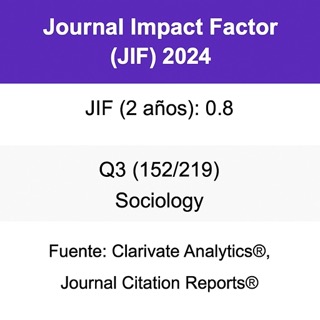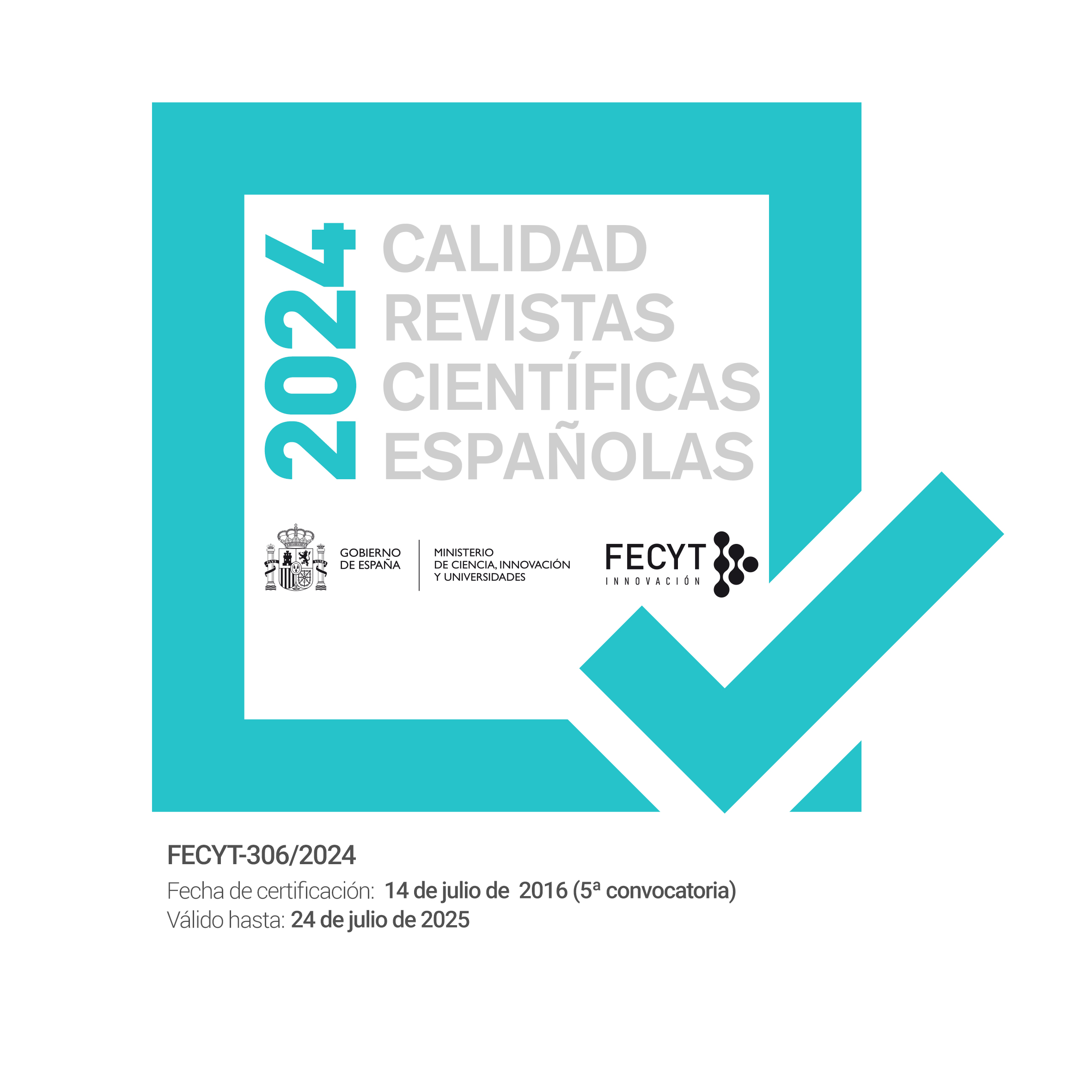Desigualdad y movilidad de ingresos: ciencia y política de la ‘curva del Gran Gatsby”
DOI:
https://doi.org/10.22325/fes/res.2023.143Palabras clave:
movilidad relativa de ingresos, desigualdad y movilidad de ingresos, curva del Gran Gatsby, ciencia social y políticaResumen
El artículo pretende presentar un caso de ‘deformación’ producida en la investigación social por su ‘captura’ política. Los estudios sobre movilidad de ingresos siguieron, aunque más tarde, una pauta de desarrollo parecida a los de movilidad social: se acumularon sin permitir la formulación categórica de regularidades empíricas. Pero sucedió que cuando algunos economistas creyeron haber encontrado una –a más desigualdad económica menor movilidad relativa de ingresos-, se apoderaron de ella las trompetas de la política, que la lanzaron a la fama con la etiqueta ‘curva del Gran Gatsby’ como una ‘ley’ social de importantes consecuencias políticas. A su vez, esta popularidad ha reforzado la crítica y la investigación empírica posterior sobre el tema.
Citas
Amaral, E. F. L., & Pérez-Arce, F. (2015). A meta-regression analysis of intergenerational transmission of income and the Great Gatsby curve.
Andrews, D., & Leigh, A. (2009). More Inequality, Less Social Mobility. Applied Economics Letters, 16(15), 1489-1992. https://doi.org/10.1080/13504850701720197
Becker, G. S., & Tomes, N. (1979). An equilibrium theory of the distribution of income and intergenerational mobility. Journal of Political Economy, 87(6), 1153-1189. https://doi.org/10.1086/260831
Becker, G. S., & Tomes, N. (1986). Human capital and the rise and fall of families. Journal of Labor Economics (Part 2), 4(3), S1-S39. https://doi.org/10.1086/298118
Beller, E., & Hout, M. (2006). Intergenerational Social Mobility: The United States in Comparative Perspective. The Future of Children, 16(2), 19-36. https://doi.org/10.1353/foc.2006.0012
Björklund, A., & Jäntti, M. (2007). Intergenerational mobility and the role of family background. In B. Nolan, W. Salverda, & T. M. Smeeding (Eds.), The Oxford Handbook of Economic Inequality (pp. 491-521). Oxford University Press. https://www.researchgate.net/profile/Anders-Bjorklund-2/publication/265181179_Intergenerational_Income_Mobility_and_the_Role_of_Family_Background/links/54f6c6640cf2ca5efeff3356/Intergenerational-Income-Mobility-and-the-Role-of-Family-Background.pdf
Blanden, J., Gregg, P., & Macmillan, L. (2007). Accounting for intergenerational income persistence: Noncognitive skills, ability and education. The Economic Journal, 117, C43-C60. https://doi.org/10.1111/j.1468-0297.2007.02034.x
Blanden, J. (2009), How Much Can We Learn From International Comparisons Of Intergenerational Mobility?. London: CEE DP 111. https://core.ac.uk/download/pdf/6657142.pdf
Branden, G. (2019). Does inequality reduce mobility? The Great Gatsby Curve and its mechanisms. In Working Paper No. 2019:20. Uppsala: Institute for Evaluation of Labour Market and Education Policy (IFAU).
Blau, P., & Duncan, O.D. (1967). The American Occupational Structure. New York: John Wiley and Sons.
Bloome, D., Dyer, S., & Zhou, X. (2018). Educational Inequality, Educational Expansion, and Intergenerational Income Persistence in the United States. American Sociological Review, 83(6), 1215-1253. https://doi.org/10.1177/0003122418809374
Boudon, R. (1973). L'inégalité des chances. La mobilité sociale dans les sociétés industrielles. Paris: Armand Colin.
Bowles, S. (1972). Schooling and Inequality from Generation to Generation. In T. W. Schultz (Ed.), Investment in Education (pp. 219-251). Chicago: The University of Chicago Press. https://doi.org/10.1086/259996
Bukodi, E., y Goldthorpe, J. H. (2020). Desigualdad social y movilidad social: ¿una relación inversa?. En O. Salido, y S. Fachelli (Eds.), Perspectivas y fronteras en el estudio de la desigualdad social: movilidad y clases sociales en tiempos de cambio (pp. 187-209). Madrid: CIS.
Carabaña, J. (1983). Educación, ocupación e ingresos en la España del Siglo XX. Madrid: MEC.
Carabaña, J. (1993). Desigualdad económica y movilidad social. En Fundación Argentaria, Actas del I Simposio sobre Igualdad y Distribución de la Renta y la Riqueza (Vol. V, pp. 7-34). Madrid: Fundación Argentaria.
Carabaña, J. (2022). Desigualdad y movilidad de ingresos: la 'curva del Gran Gatsby' en 46 provincias españolas.
Center, S. Davis, J., & Mazumder, B. (2020). The Decline in Intergenerational Mobility After 1980. SocArXivevfcx. Center for Open Science. https://doi.org/10.31235/osf.io/evfcx
Chetty, R., Hendren, N., Kline, P., & Saez, E. (2014a). Where is the Land of Opportunity? The Geography of Intergenerational Mobility in the United States. Quarterly Journal of Economics, 129, 1553-1623. https://doi.org/10.1093/qje/qju022
Chetty, R., Hendren, N., Kline, P., Saez, E., & Turner, N., (2014b). Is the United States Still a Land of Opportunity? Recent Trends in Intergenerational Mobility. American Economic Review Papers and Proceedings, 104(5), 141-147 https://doi.org/10.1257/aer.104.5.141
Connolly, M., Corak, M., & Haeck, C. (2019). Intergenerational Mobility Between and Within Canada and the United States. Journal of Labor Economics, 37, S595-S641. https://doi.org/10.3386/w25735
Corak, M. (2006). Do Poor Children Become Poor Adults? Lessons from a Cross Country Comparison of Generational Earnings Mobility. IZA DP, (1993). https://doi.org/10.1016/S1049-2585(06)13006-9
Corak, M. (2012). The economics of the Great Gatsby Curve. Miles Corak. https://milescorak.com/2012/01/17/the-economics-of-the-great-gatsby-curve/
Corak M. (2013a). Inequality from Generation to Generation: The United States in Comparison. In R. Rycroft (Ed.), The Economics of Inequality, Poverty, and Discrimination in the 21st Century. ABC-CLIO.
Corak, M. (2013b). Income Inequality, Equality of Opportunity, and Intergenerational Mobility. Journal of Economic Perspectives, 27(3), 79-102. https://doi.org/10.1257/jep.27.3.79
Corak, M. (2016a). How the Great Gatsby Curve got its name. Miles Corak. https://milescorak.com/2016/12/04/how-the-great-gatsby-curve-got-its-name/
Corak, M. (2016b). Inequality from Generation to Generation. The US in Comparison. IZA Discussion Paper, (9929). https://doi.org/10.2139/ssrn.2786013
Corak, M. (2020). The Canadian Geography Of Intergenerational Income Mobility. The Economic Journal, 130(631), 2134-2174. https://doi.org/10.1093/ej/uez019
Corak, M., Lindquist, M. J., & Mazumder, B. (2014). A comparison of upward and downward intergenerational mobility in Canada, Sweden and the United States. Labour Economics, 30, 85-200. https://doi.org/10.1016/j.labeco.2014.03.013
D’Addio, A. C. (2007). Intergenerational Transmission of Disadvantage: Mobility or Immobility across Generations? A Review of the Evidence for OECD Countries. OECD Social, Employment and Migration Working Paper, (52). https://www.oecd-ilibrary.org/docserver/217730505550.pdf?expires=1666287661&id=id&accname=guest&checksum=E34A54E1ED23C57426B979844343FBB3
DiPrete, T., (2020). The Impact of Inequality on Social Mobility. Annual Review of Sociology, 46, 379-398. https://doi.org/10.1146/annurev-soc-121919-054814
Duncan, O. D., Featherman D., & Duncan, B. (1972). Socioeconomic Background and Achievement. New York and London: Seminar Press.
Durlauf, S. N., Kourtellos, A., & Tan, C. M. (2021). The Great Gatsby Curve. Stone Center On Socio-Economic Inequality Working Paper Series, 43. https://doi.org/10.31235/osf.io/mrw9y
Durlauf, S. N., & Seshadri, A. (2018). Understanding the Great Gatsby curve. NBER Macroeconomics Annual, 32(1), 333-393. https://doi.org/10.1086/696058
Erikson, R., & Goldthorpe, J. H. (1992). The Constant Flux. Oxford: University Press.
Erikson, R., & Goldthorpe, J. H. (2010). Has Social Mobility in Britain Decreased? Reconciling Divergent Findings on Income and Class Mobility. British Journal of Sociology, 61, 211-230. https://doi.org/10.1111/j.1468-4446.2010.01310.x
Fan, Y., Junjian Y., & Zhang, J. (2015). The Great Gatsby Curve in China: Cross-Sectional Inequality and Intergenerational Mobility. Working Paper. Hong Kong: CUHK.
Glass, D. V. (1954) Social Mobility in Britain. London: Routledge and Kegan Paul.
Goldthorpe, J. H. (2013). Understanding –and Misunderstanding– Social Mobility in Britain: The Entry of the Economists, the Confusion of Politicians and the Limits of Educational Policy. Journal of Social Policy, 42(3), 431-450. https://doi.org/10.1017/S004727941300024X
Greeley, B. (2013). The Great Gatsby Curve: How Inequality Became a Household Word. Bloomberg Businessweek. https://www.bloomberg.com/news/articles/2013-12-12/the-gatsby-curve-how-inequality-became-a-household-word.
Halter, H. (2015). Accounting for Cross-Country Differences in Intergenerational Earnings Persistence: The Impact of Taxation and Public Education Expenditure. Quantitative Economics, 6, 385-428. https://doi.org/10.3982/QE286
Hout, M. (2003). The inequality-mobility paradox: the lack of correlation between social mobility and equality. New Economy, 10, 205- 207. https://doi.org/10.1046/j.1468-0041.2003.00318.x
Hout, M., & DiPrete, T. (2006). What We Have Learned: RC28's Contributions to Knowledge About Social Stratification. Research in Social Stratification and Mobility, 24(1), 1-20. https://doi.org/10.1016/j.rssm.2005.10.001
Jäntti, M., & Jenkins, S. P. (2013). Income mobility. En A. B. Atkinson, & F. Bourguignon (Eds.), Handbook of Income Distribution (Vol. 2). Elsevier-North Holland.
Jerrim, J., & Macmillan, L (2016). Income Inequality, Intergenerational Mobility, and the Great Gatsby Curve: Is Education the Key?. Social Forces, 94, 505-533. https://doi.org/10.1093/sf/sov075
Krueger, A. (2012). The Rise and Consequences of Inequality in the United States. https://milescorak.files.wordpress.com/2012/01/34af5d01.pdf
Kwon, B., & Gyeahyung, J. (2020). Does the Great Gatsby Curve Exist in South Korea?. Project: Intergenerational Mobility. https://www.researchgate.net/publication/343737287_Does_the_Great_Gatsby_Curve_Exist_in_South_Korea/figures?lo=1
Lipset, S. M., & Bendix, R. (1959). Social Mobility in Industrial Society. Berkeley: University of California Press.
Manzi, J. (2012). The Great Gatsby, Moby Dick, and Omitted Variable Bias. The National Review. https://www.nationalreview.com/corner/great-gatsby-moby-dick-and-omitted-variable-bias-jim-manzi/
Miller, S. M. (1960). Comparative Social Mobility. A trend report and bibliography. Current Sociology /La sociologie contemporaine, IX(1). https://doi.org/10.1177/001139216000900101
Mogila, Z., Melo, P., & Gaspar, J. (2020). Exploring the Relation Between Income Mobility and Inequality at the Regional Level Using EU-SILC Microdata. REM Working Paper 0134-2020.
OCDE. (2008). Growing Unequal. Income distribution and poverty in OECD countries. París: OECD. https://doi.org/10.1787/9789264044197-en
OCDE. (2011). Divided we stand. Why Inequality keeps rising. París:OECD Publising. https://doi.org/10.1787/9789264119536-en
OCDE. (2018). A Broken Social Elevator?How to Promote Social Mobility. Paris:
OCDE Publishing. https://doi.org/10.1787/9789264301085-en.
Sánchez Hugalde, A. (2004). Movilidad intergeneracional de ingresos y educativa en España (1980-90). WorkingPaper No. 2004/1, Institutd'Economia de Barcelona, Centre de Recerca en Federalismo Fiscal i Economia Regional.
Setzler, B. J. (2014). Is the Great Gatsby curve robust? Comment on Corak (2013). Economics.
Sewell, W. H., & Hauser, R. M. (1975), Education, Occupation and Earnings: Achievement in Early Career. New York: Academic Press
Solon, G. (2004). A model of intergenerational mobility variation over time and place. In M. Corak (Ed.), Generational income mobility in North America and Europe (pp. 38-47). Cambridge: Cambridge University Press. https://doi.org/10.1017/CBO9780511492549.003
Soria-Espín, J. (2022). El ascensor social en España. Un análisis sobre la movilidad intergeneracional de la renta. Centro de Políticas Económicas EsadeEcPol. https://www.esade.edu/ecpol/es/publicaciones/el-ascensor-social-en-espana-un-analisis-sobre-la-movilidad-intergeneracional-de-la-renta/
The White House. (2013). Remarks by the President Barack Obama on Economic Mobility. Obama White House Archives. https://obamawhitehouse.archives.gov/the-press-office/2013/12/04/remarks-president-economic-mobility
Torche, F. (2015). Intergenerational Mobility and Equality of Opportunity. European Journal of Sociology, 56(3), 343-371. https://doi.org/10.1017/S0003975615000181
Torche, F. (2020). Movilidad intergeneracional e igualdad de oportunidades. En O. Salido, y S. Fachelli (Eds.), Perspectivas y fronteras en el estudio de la desigualdad social: movilidad y clases sociales en tiempos de cambio (pp. 71-96). Madrid: CIS.
Treiman, D. J. (1970) Industrialization and social stratification. Sociological Inquiry, 40(2), 207-234. https://doi.org/10.1111/j.1475-682X.1970.tb01009.x
Treiman, D., & Hauser, R. M. (1977). Intergenerational transmission of income. An exercise in theory construction. In R. M. Hauser, & D. L. Featherman, The Process of Stratification. New York:Academic Press. https://doi.org/10.1016/B978-0-12-333050-5.50018-2
Tyree, A., Semyonov, M., & Hodge, R.W, (1979). Gaps and Glissandos: Inequality, Economic Development, and Social Mobility in 24 Countries. American Sociological Review, 44(3), 410-424. https://doi.org/10.2307/2094884
Winship, S. (2012). The Obama Administration’s Questionable Economic Mobility Claims. Brookings. https://www.brookings.edu/opinions/the-obama-administrations-questionable-economic-mobility-claims/
Yaish, M., & Anderson, R. (2011). Social mobility in 20 modern societies: The role of economic and political context. Social Science Research, 41(3), 527-538. https://doi.org/10.1016/j.ssresearch.2011.12.001
Publicado
Cómo citar
Número
Sección
Licencia
Derechos de autor 2022 Julio Carabaña Morales

Esta obra está bajo una licencia internacional Creative Commons Atribución-NoComercial 4.0.
Todas las publicaciones de la Revista Española de Sociología se realizarán bajo una licencia abierta Creative Commons de Reconocimiento 4.0 Internacional (CC BY 4.0). Dicha licencia establece que los autores son los poseedores de los derechos de propiedad intelectual de sus trabajos, que pueden redistribuirse a cambio de un reconocimiento adecuado. Para más información de la licencia Creative Commons, consultar aquí.
Una vez aceptado un artículo para su publicación, la Revista Española de Sociología solicitará al denominado "autor para la correspondencia" la aceptación de una licencia obligatoria Creative Commons incluida en un acuerdo o contrato de publicación.




